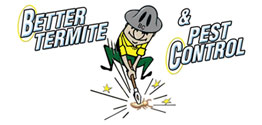Flying termites, also known as swarmers, are members of the reproductive caste of a colony. Once a termite colony reaches maturity, it will spawn winged termites that fly out, mate, and start new colonies. Here is everything you need to know about these swarmers:
Appearance
In terms of size, a termite swarmer can reach lengths of ⅜ths of an inch, with a dark brown or black coloration. They have four wings, and the wings are of equal length, as opposed to those of ant swarmers which have different lengths for the top and bottom wings. Termite swarmers also have a wider waist than ant swarmers, and they have bent antennae.
The dangers of termite swarms
Since new termite colonies start with swarms, the swarms themselves can be an indication of a future infestation. However, it also depends on the species of the swarm. Subterranean termite colonies for example are built underground, and it takes a really long time for them to grow and start posing a threat to the surrounding buildings. Drywood and dampwood termites however build their colonies inside wood, so when they start a colony, the infestation starts right away.
Termite swarms also indicate that there is a mature termite colony nearby, and when you notice termite swarms indoors, then you have a real cause for concern. When the swarms are outdoors, if they are very close to your property, then it may be an indication that there is an underground colony nearby.
What to do about termite swarmers?
Termite swarmers are harmless by themselves. They’ll fly around for a while, and most of them will end up dead. The big issue with swarmers is what they indicate. When you notice swarmers near your home, it can be a cause for concern. However, it’s not possible to call a pest control pro after every swarm that flies on your property, because they will be present throughout the year. The best solution is to have a regular inspection schedule once a year to detect any pest infestation early on.
The real issue with swarmers is when they are inside the home. At that point, you have pretty much 100% confirmation that there is an infestation somewhere in the building. If you have noticed such a swarm, contact us today, and we will set up an appointment for an inspection.



